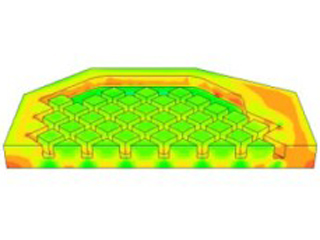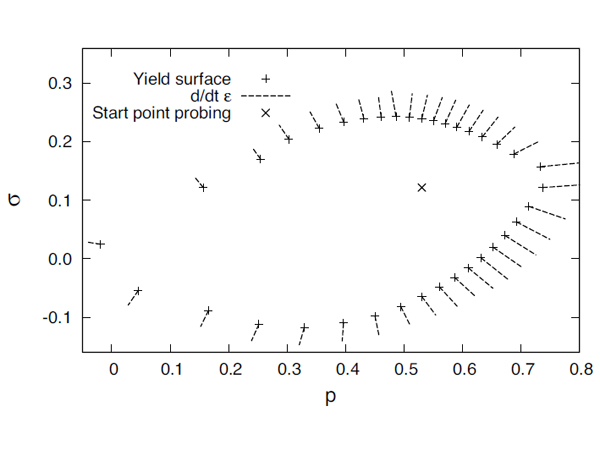Powder compacting: predicting green density and yield surfaces
Introduction
The shaping of powder-based components by way of dry pressing and subsequent sintering is a process that is now established on an industrial scale, especially for reasons of cost, and is one of the standard forming methods for many classes of material. Those materials include ceramics, carbides, sintering steels, magnetic materials and substances for the pharmaceuticals industry. The method involves first filling the powder into a cavity (die filling) and afterwards compacting it uniaxially or isostatically under high pressure. In the following sintering process in which the so-called green compact is subjected to a temperature of approx. 80% of its melting temperature, the component undergoes further compaction, driven by diffusion processes, to reach its final form and strength.
The task

In powder compacting the different degrees of compaction and friction effects often lead to an inhomogeneous density distribution in the green compact. During the subsequent sintering, zones with a high density shrink less than those with a low density, which can lead to undesirable distortion of the component. Numerical simulation allows this distortion to be predicted, thus allowing the compacting process, or rather the component form, to be optimized.
In principle, it is possible to simulate the entire compacting process with SimPARTIX® at particle level, which, however, calls for a high computing capacity owing to the large number of particles. An alternative is to use continuum mechanics simulations with finite element programs, as have been carried out successfully at the Fraunhofer Institute for Mechanics of Materials IWM for many years. The material models required are, however, of a phenomenological nature; the model parameters must be determined through experiments. Therefore, we carried out our own research project to establish whether the yield surfaces required for the material models could be predicted with SimPARTIX® by using a model powder.
Results

SimPARTIX® was used to simulate a representative volume cell consisting of several thousand particles in order to calculate the yield surfaces. The simulation cell was subjected to periodic boundary conditions which allow any strain states to be specified. This approach enables a macroscopic deformation history to be imposed on the simulation cell first of all, and afterwards the yield surface to be determined. To do this, six independent strain conditions were imposed on the simulation cell, one after the other, and the associated respective stress responses determined.
This procedure can be repeated for various densities in order to determine the chronological development of the yield surface. The figure shows the yield surface after a complex loading situation (compression and shear) for a relative density of 85%. By varying the powder parameters (e.g. particle size distribution), it is possible to determine directly how these influence the compaction behavior of the powder. In addition, this approach enables existing, often very simple, continuum mechanics models to be improved.
 Fraunhofer Institute for Mechanics of Materials IWM
Fraunhofer Institute for Mechanics of Materials IWM